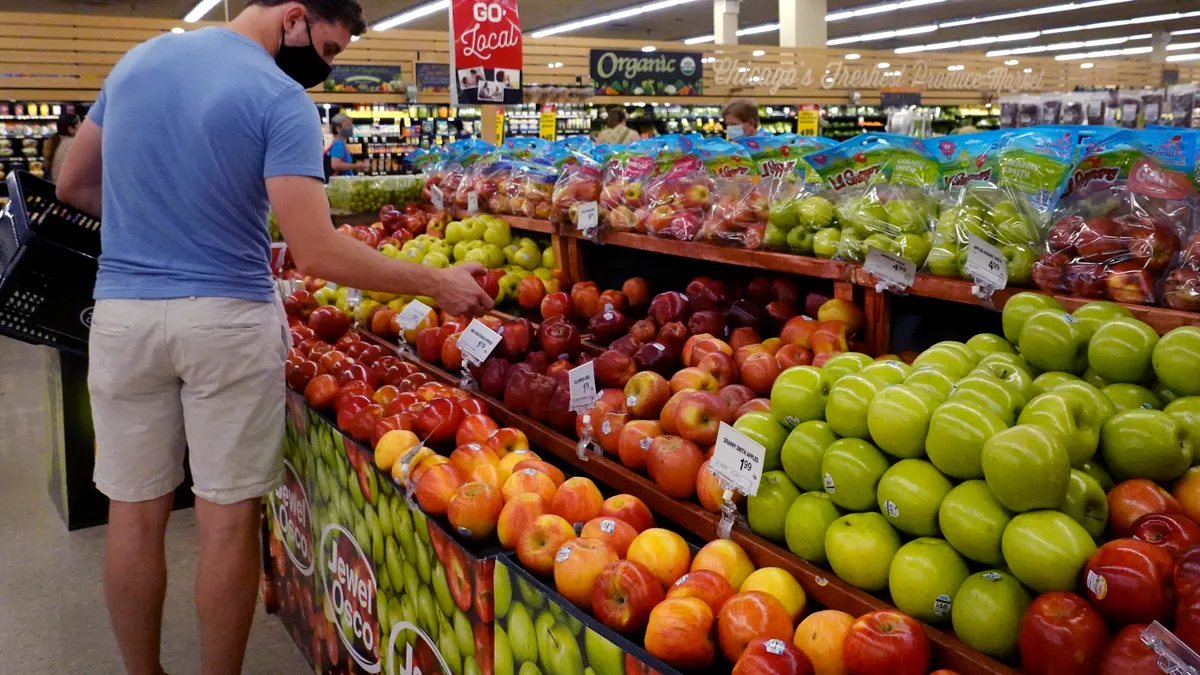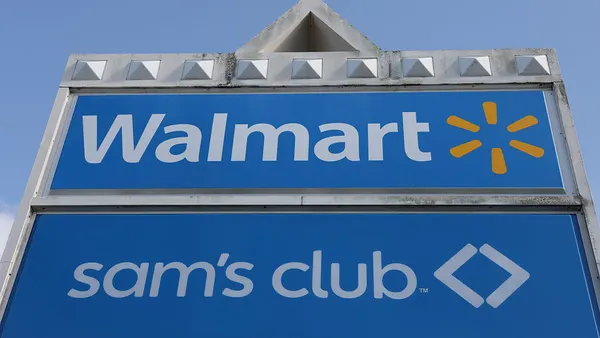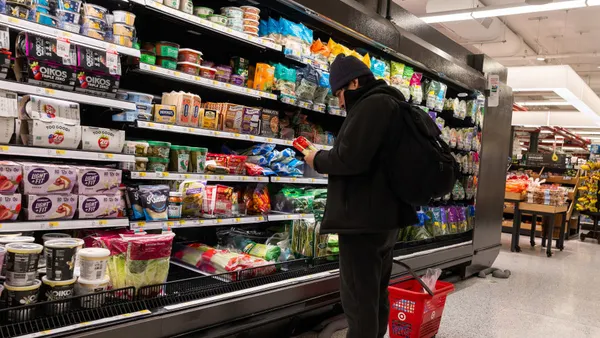Dive Brief:
- Overall growth in the U.S. grocery market is poised to slow to a 3.3% annual rate this year, down from 4.5% in 2021, as the pandemic subsides and people eat outside their homes more often, according to figures published Thursday by Coresight Research.
- Grocery e-commerce, however, is on course to rise nearly twice as quickly in 2022 as it did last year, buoyed by sustained consumer interest in retaining online shopping habits driven by the COVID-19 crisis, Coresight predicted.
- Shifting consumer behavior could presage changes in the makeup of the grocery industry as retailers face mounting pressure to invest in promotions while skyrocketing inflation pushes costs up.
Dive Insight:
The data from Coresight paints a mixed picture for the food retailing industry, underscoring continued opportunities for retailers to build their businesses as well as the risks posed by the quickly evolving economic landscape.
While the grocery market might be decelerating, it remains sharply above where it was before the pandemic began and is on course to continue rising modestly during the next several years, the research indicates. Grocery spending in the United States topped $1.3 trillion in 2021 and could come close to $1.5 trillion by 2025, Coresight estimated.
According to the report, the food retailing industry is likely to post a compound annual growth rate of 2.7% from 2022 to 2025 after storming ahead 12.5% in 2020.
Grocers are in position to benefit as food-at-home spending remains elevated and high inflation shines a spotlight on the cost of eating in restaurants, which Coresight noted is increasing faster than retail prices. That focus on cost could be especially beneficial to discounters like Walmart, Lidl and fast-growing Aldi, but could hurt other chains — especially those that operate in areas where price-focused food retailers have a strong presence.
Food-at-home prices have risen 7.4% over the past year, according to Consumer Price Index data released Thursday by the U.S. Bureau of Labor Statistics.
Coresight added it expects shoppers to boost the number of retailers where they buy groceries, a trend it said could help specialty grocers but draw customers away from warehouse clubs and mass merchandisers.
While food retailers are facing broad headwinds, people's strong embrace of online shopping is paving the way for e-commerce to expand at a brisk clip during the months ahead. Coresight anticipates that digital sales for grocers will grow by 32.4% in 2022, up sharply from the 17.9% the research firm estimated the industry posted last year.
But while the heightened emphasis on e-commerce presents opportunities for the grocery industry, it also could make it harder for smaller retailers to keep up with competitors that have more resources to invest in digital infrastructure. This divide could eventually spur merger-and-acquisition activity in the grocery space as larger players look to purchase weaker rivals in a bid to build scale and improve profitability, Coresight predicted, adding that some retailers are likely to leave the market altogether.














